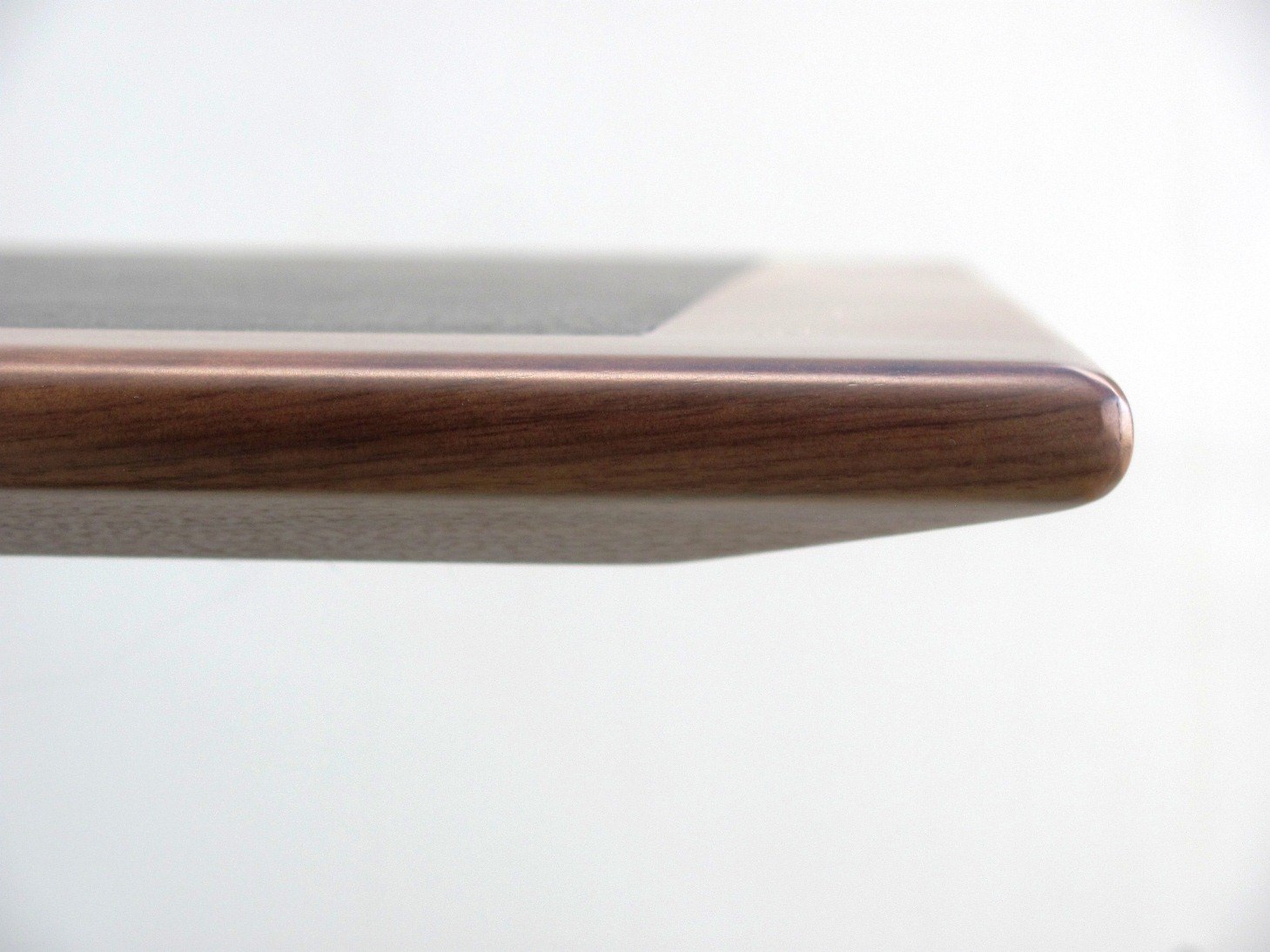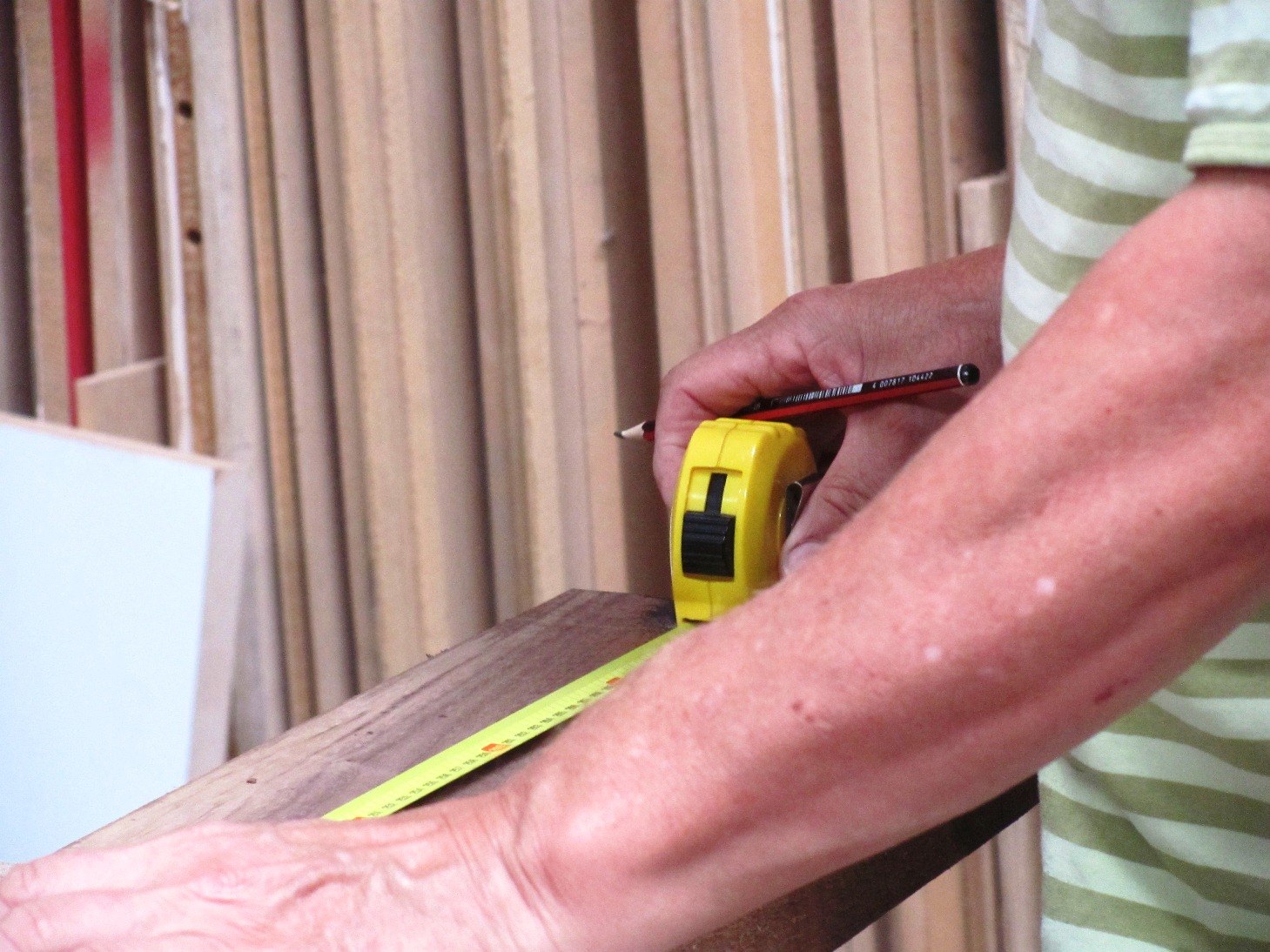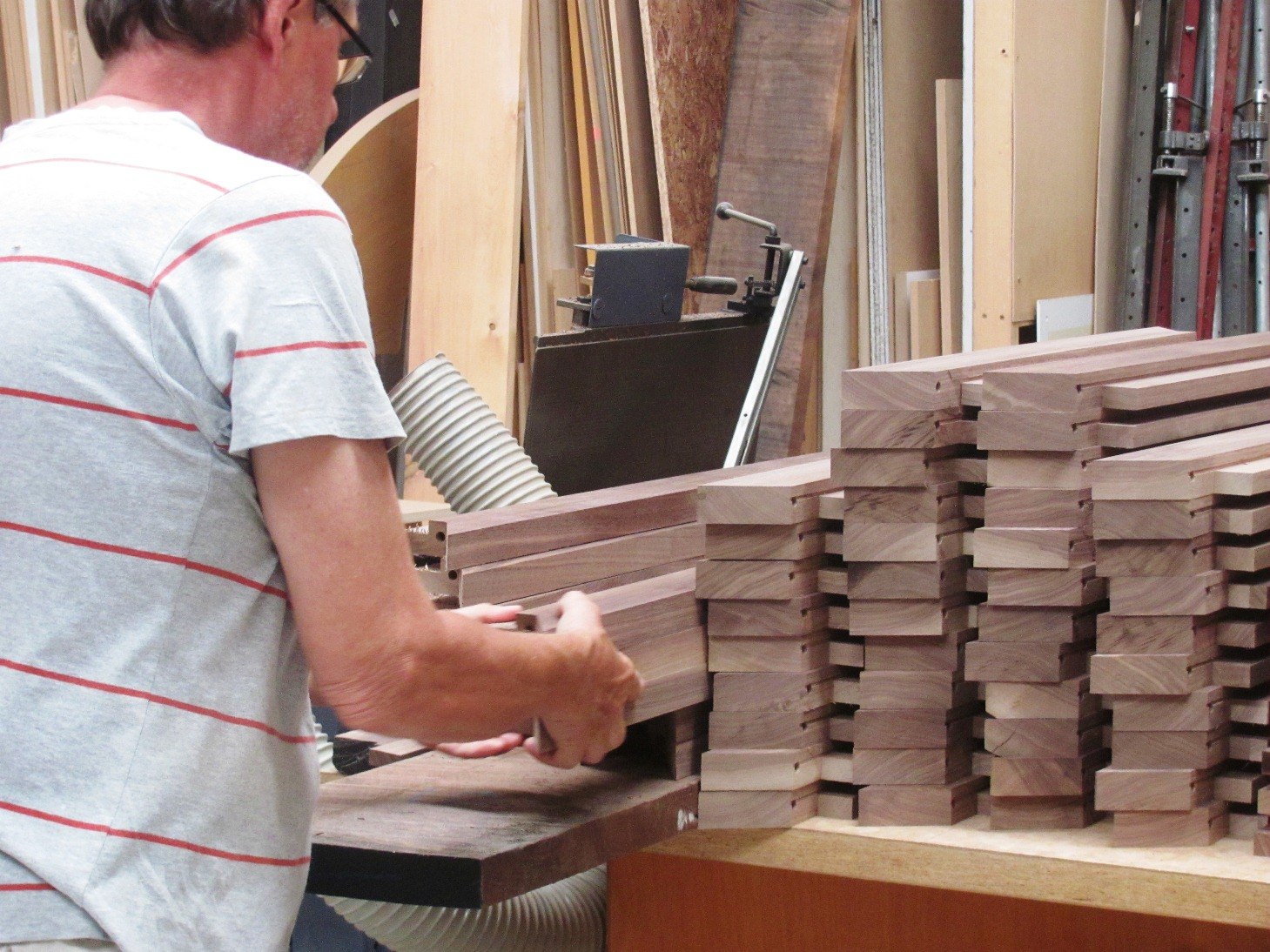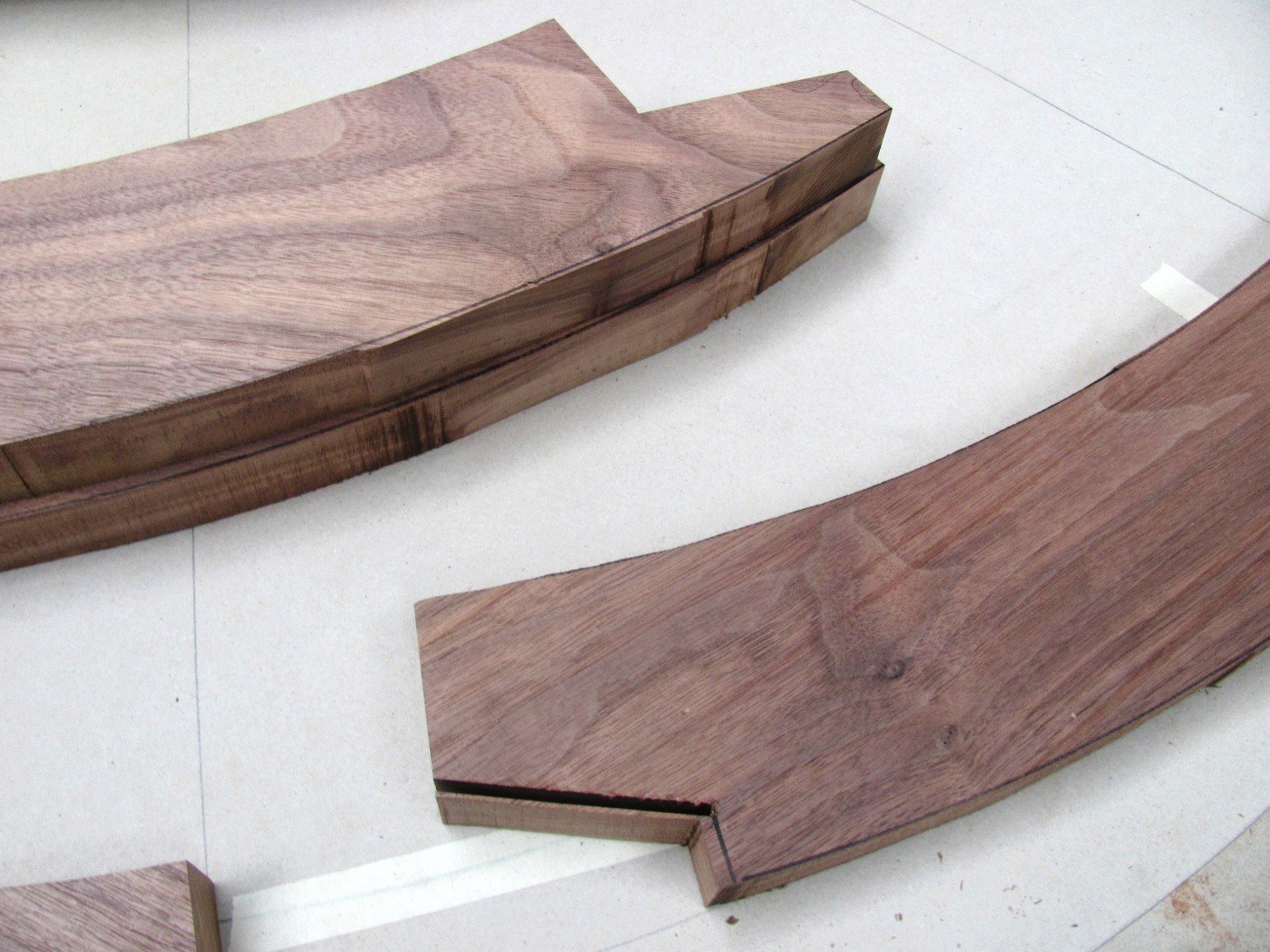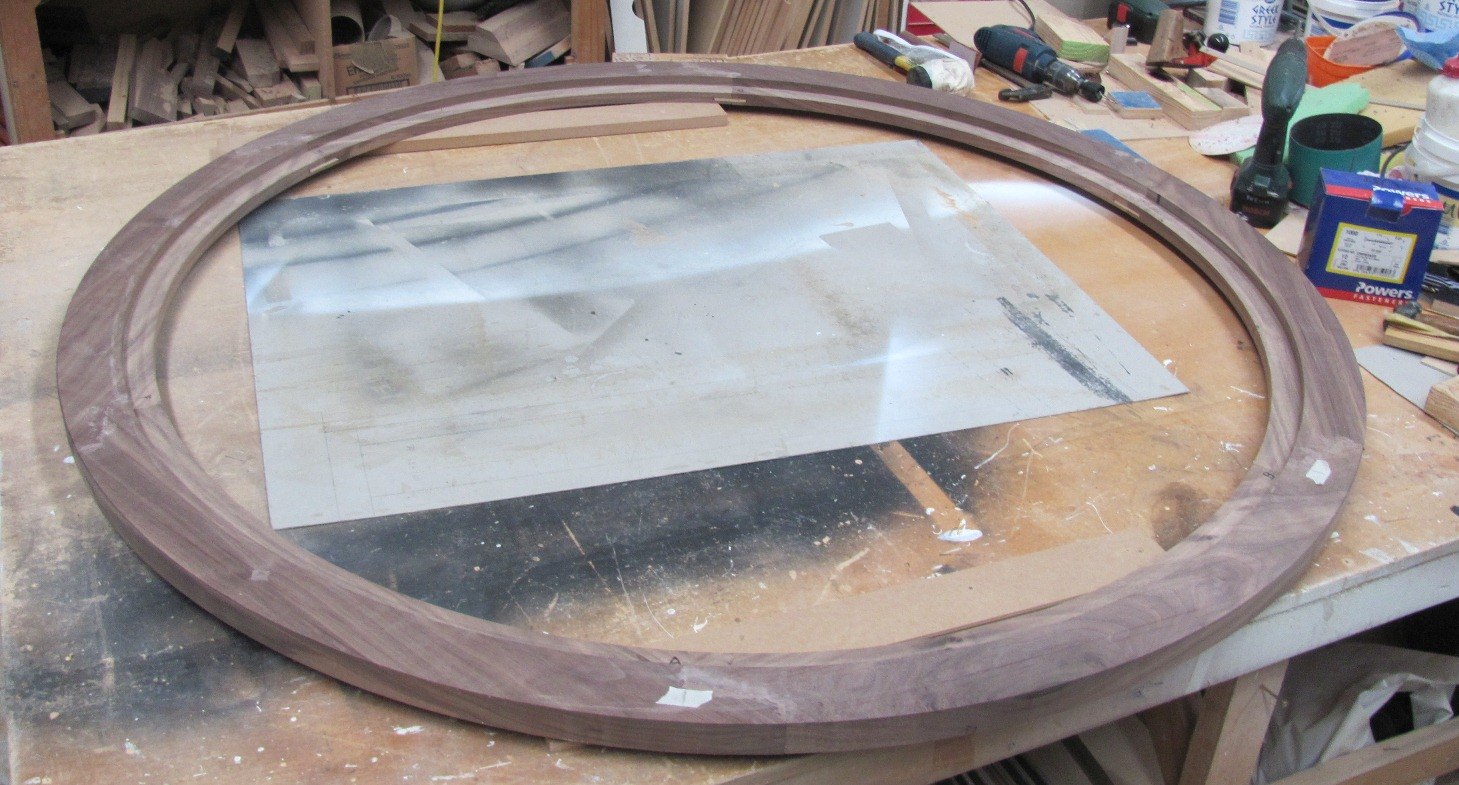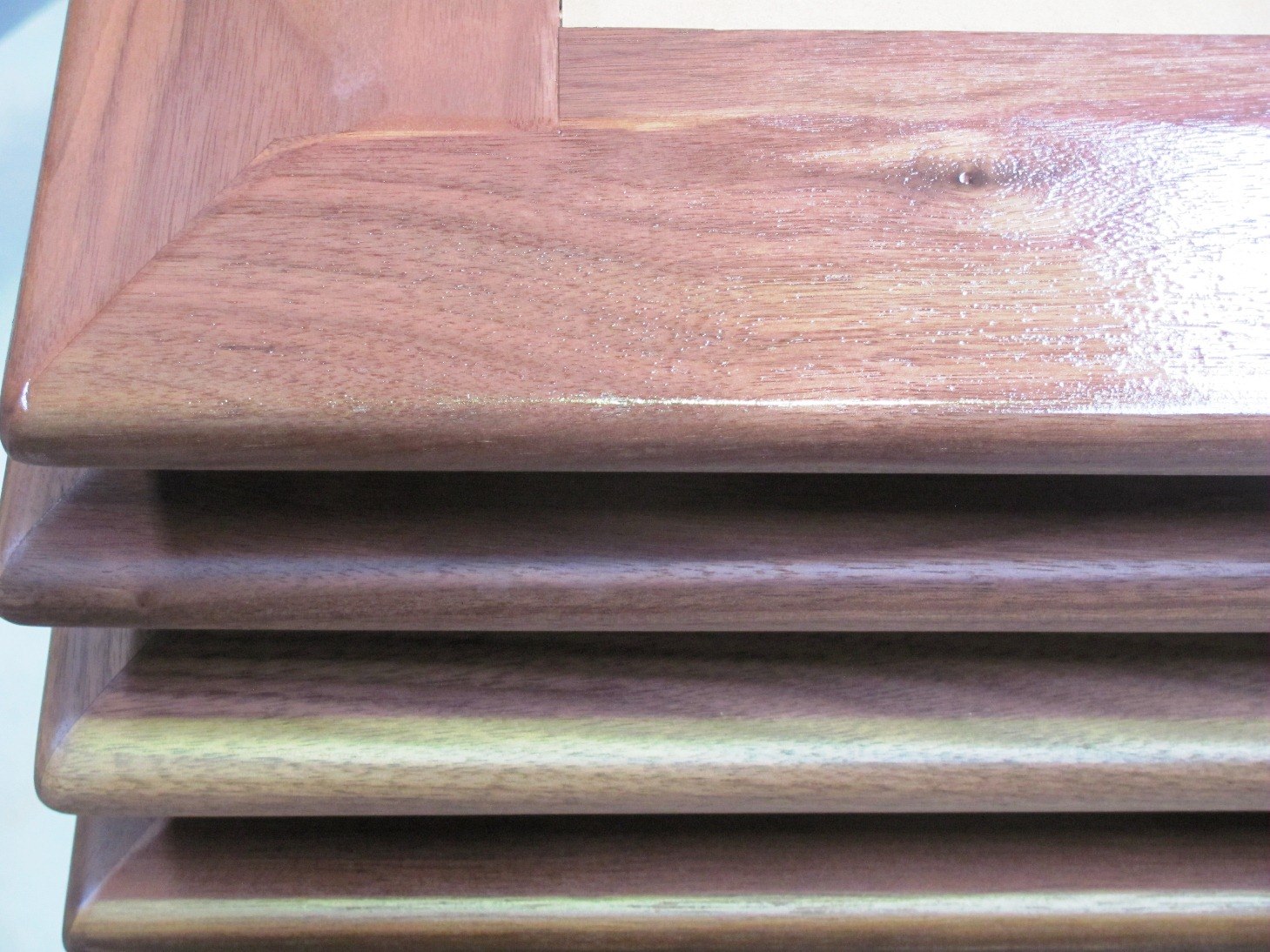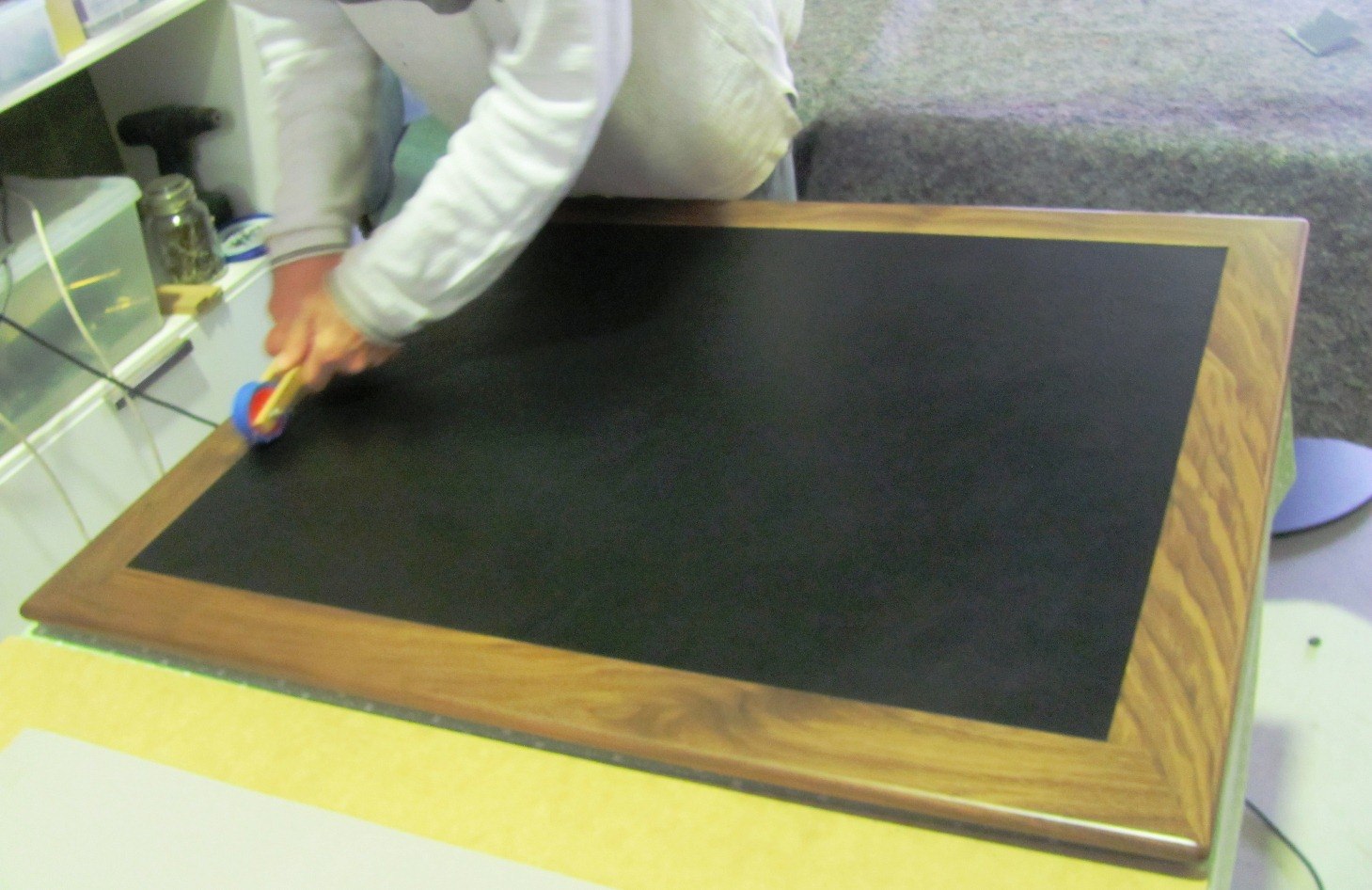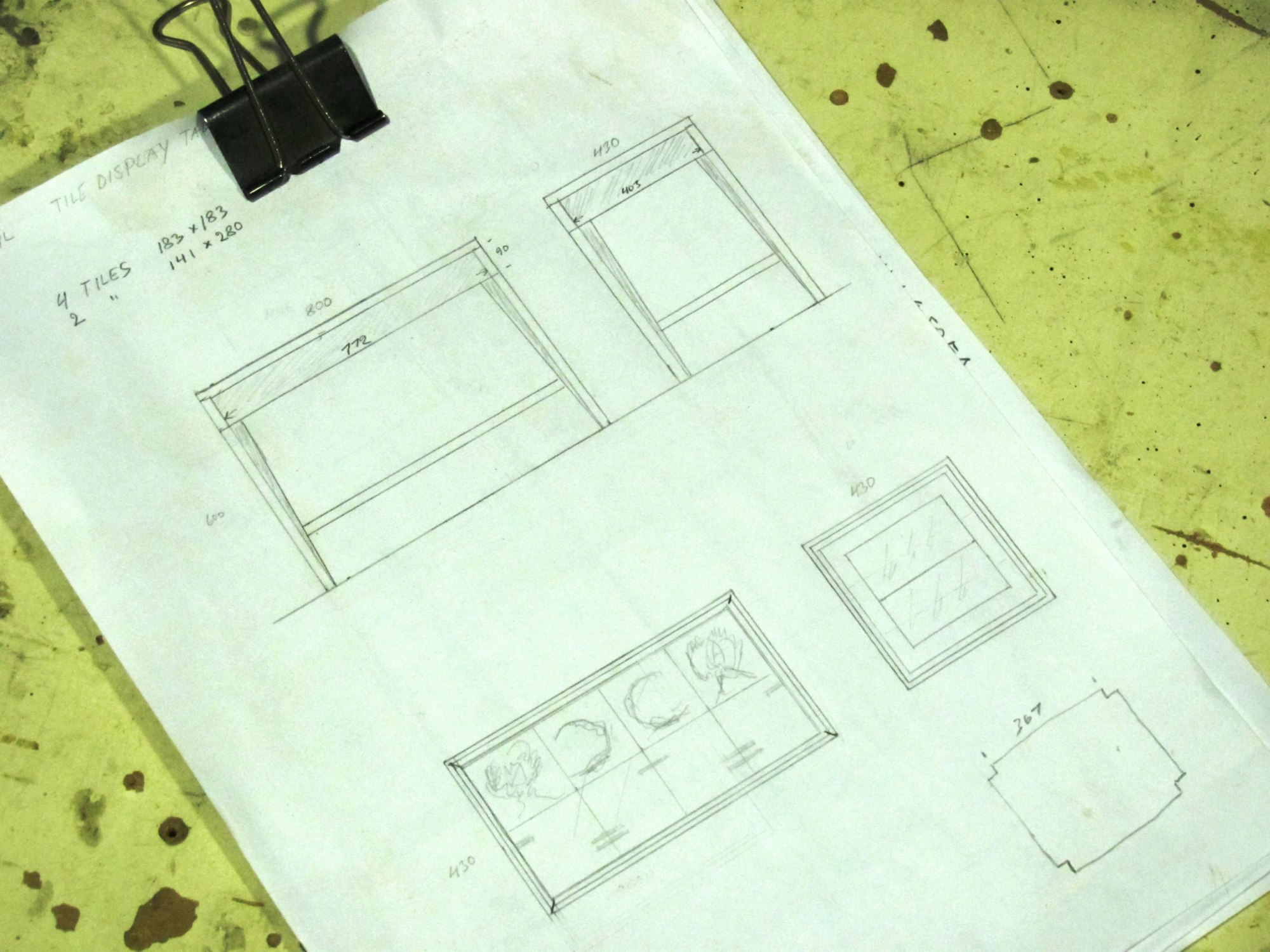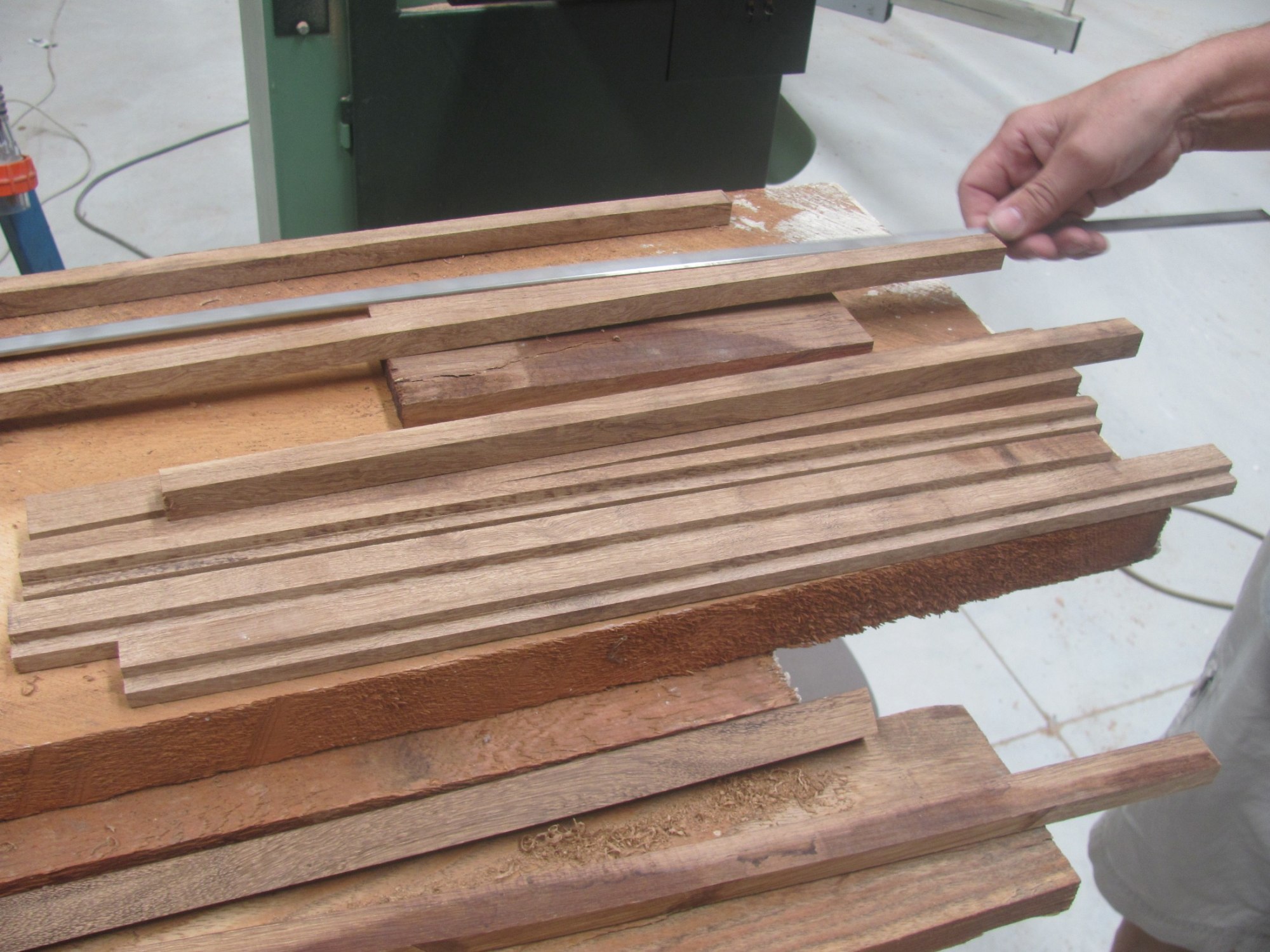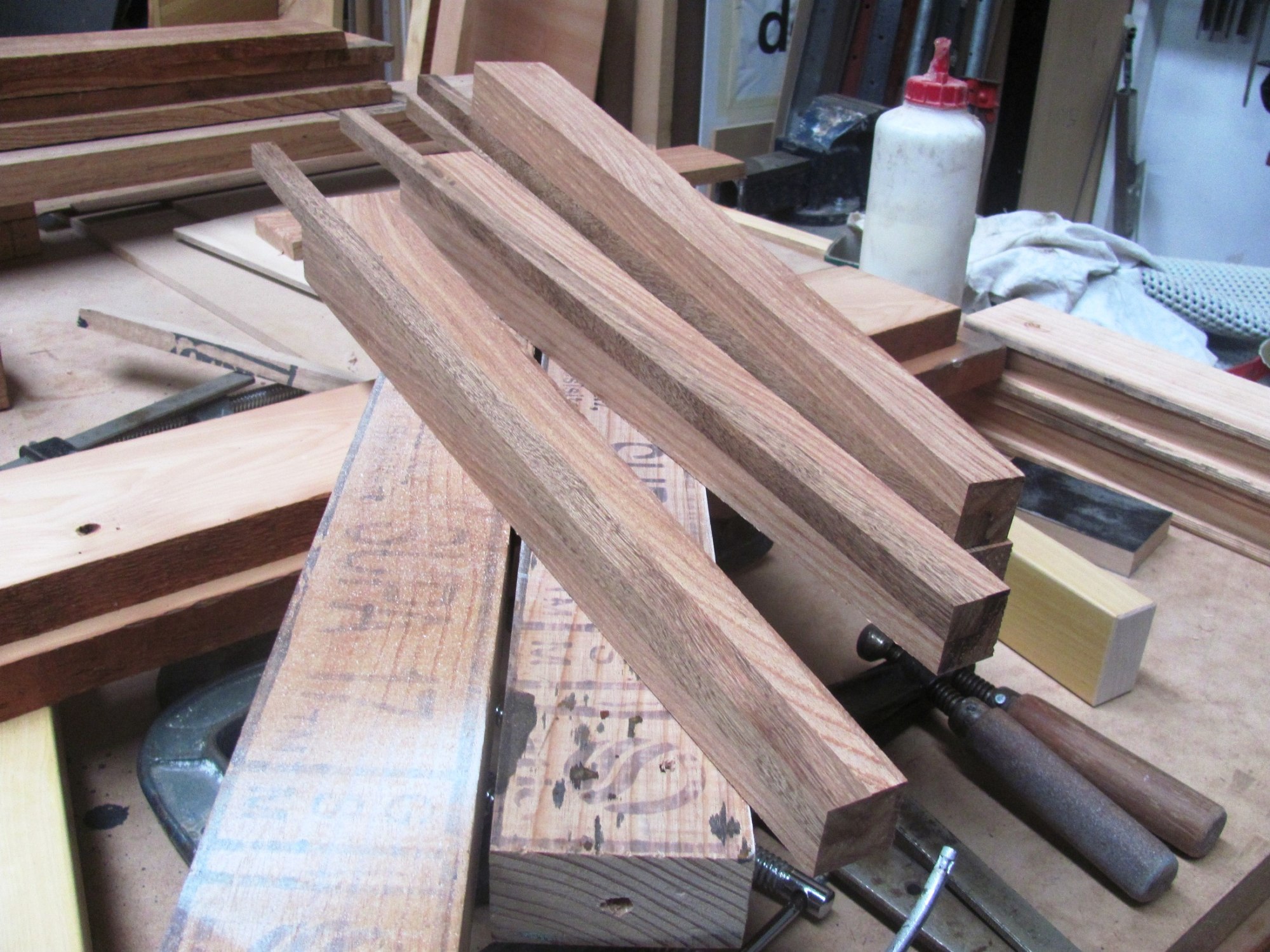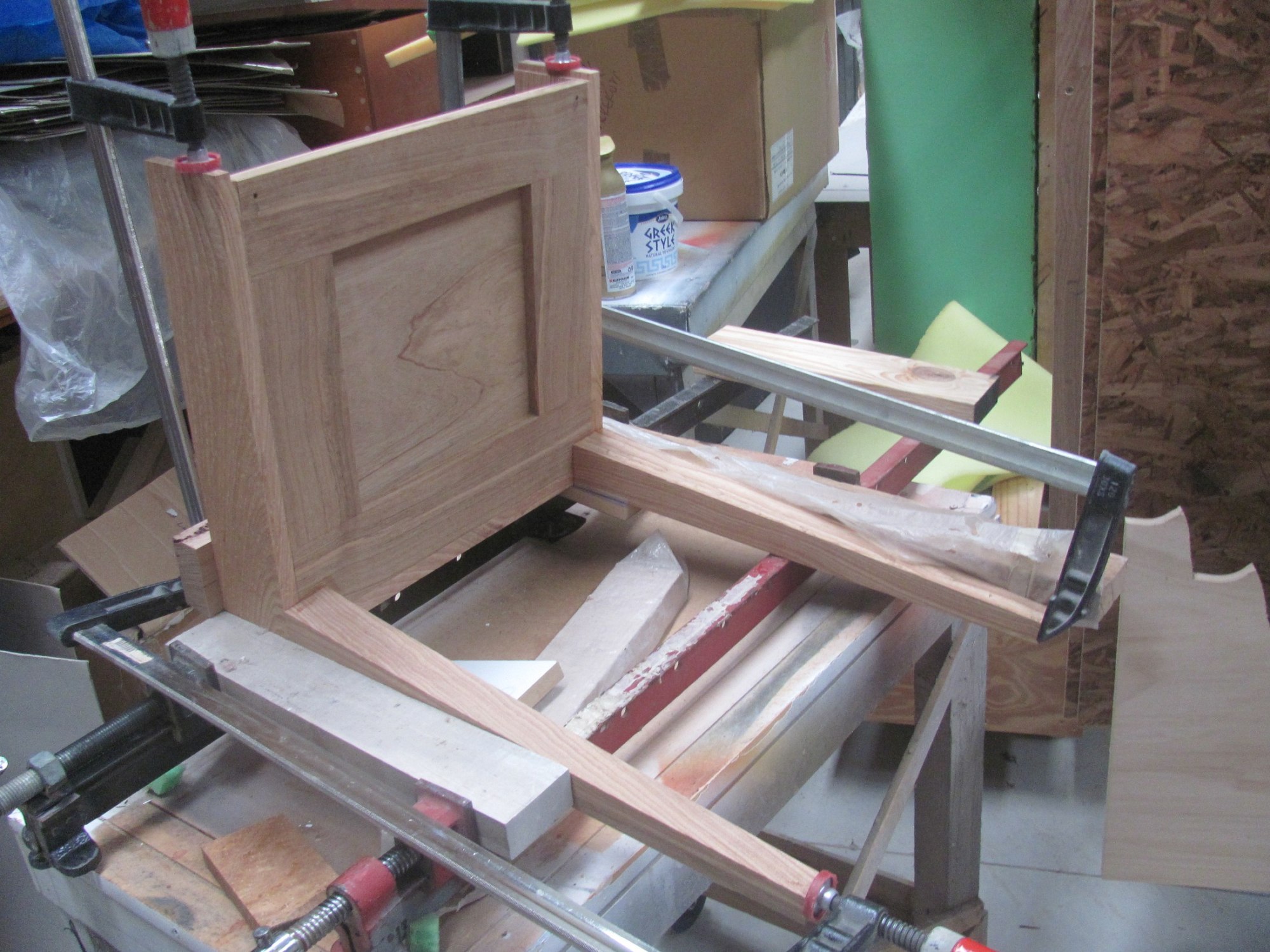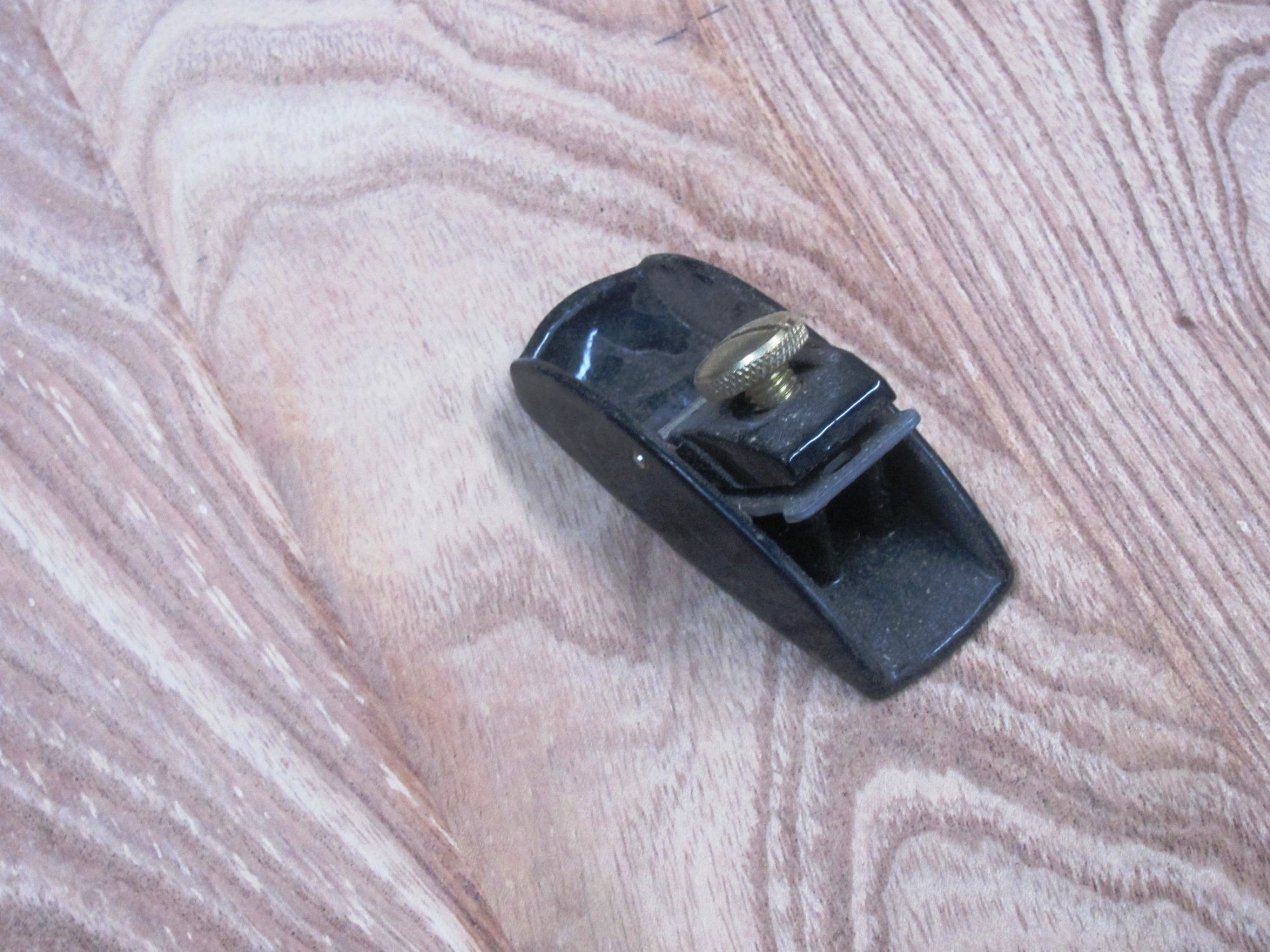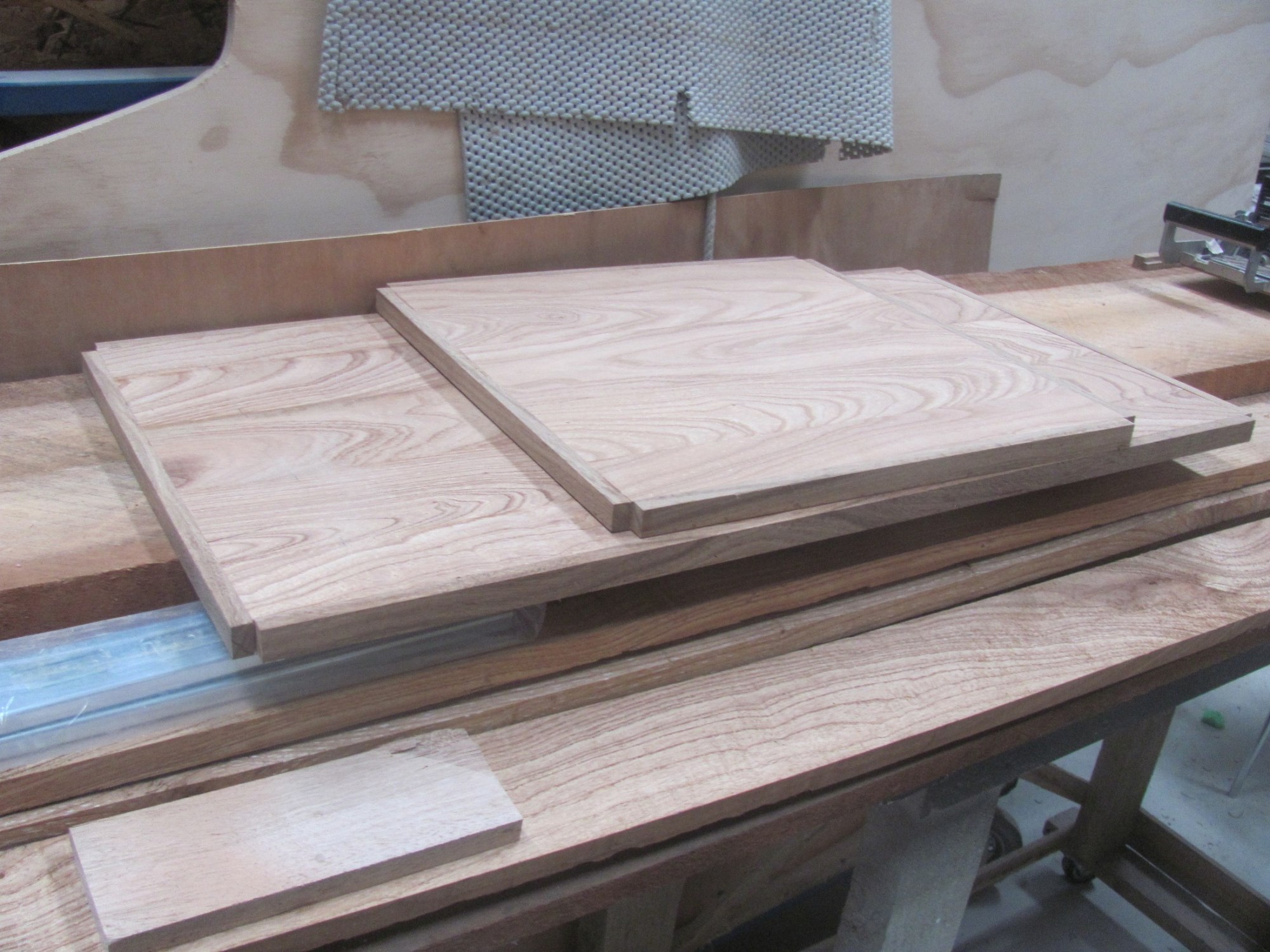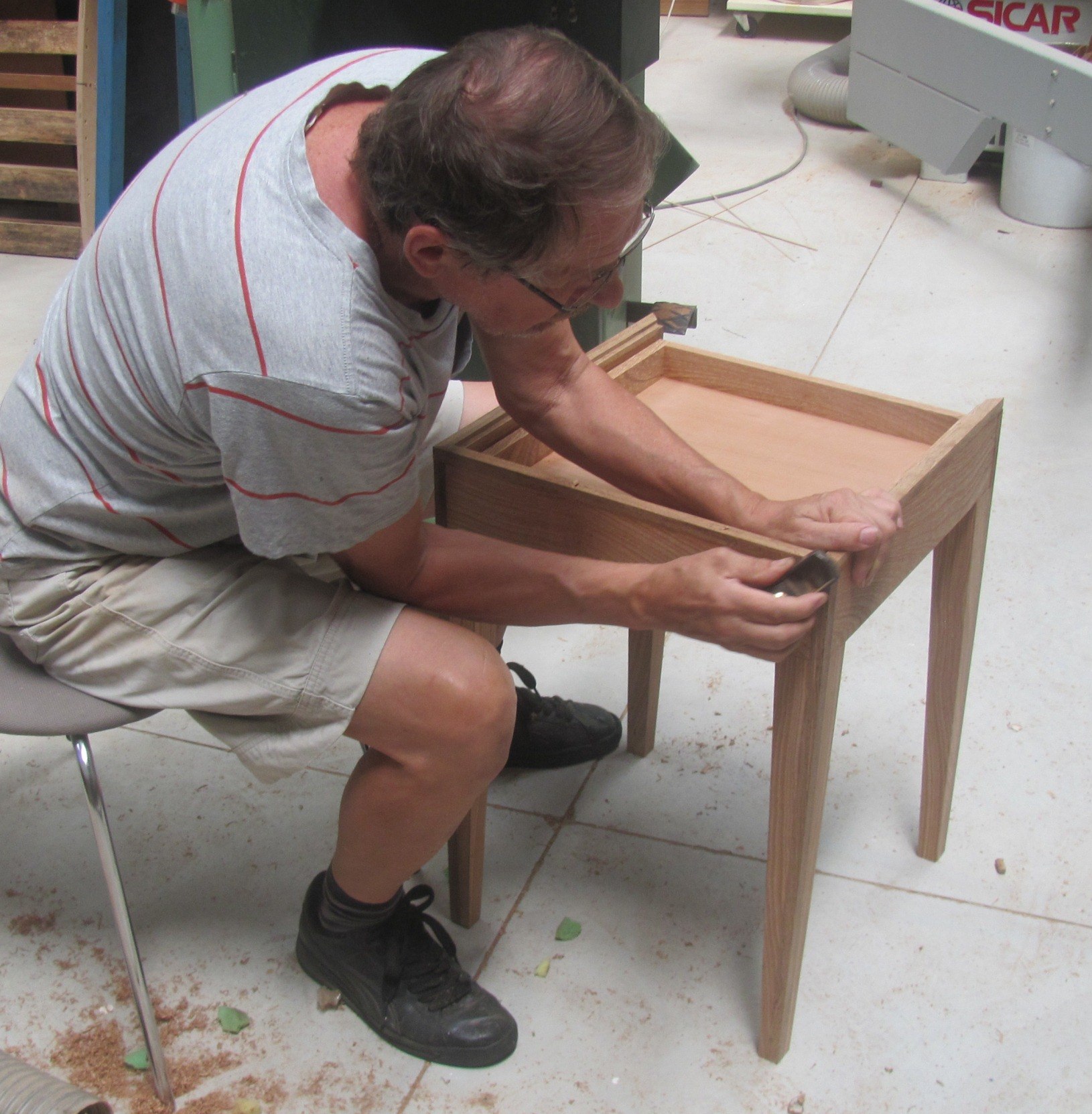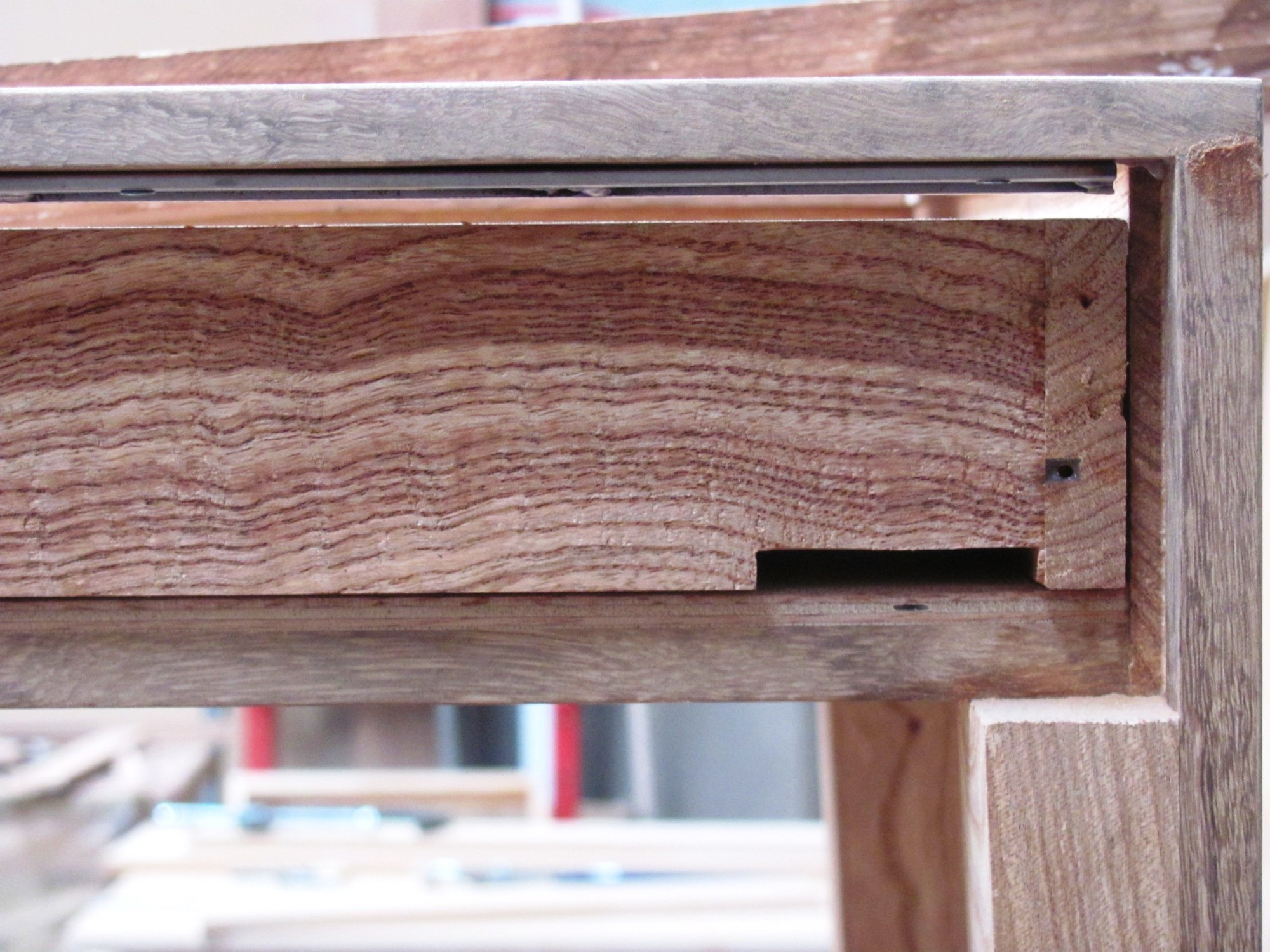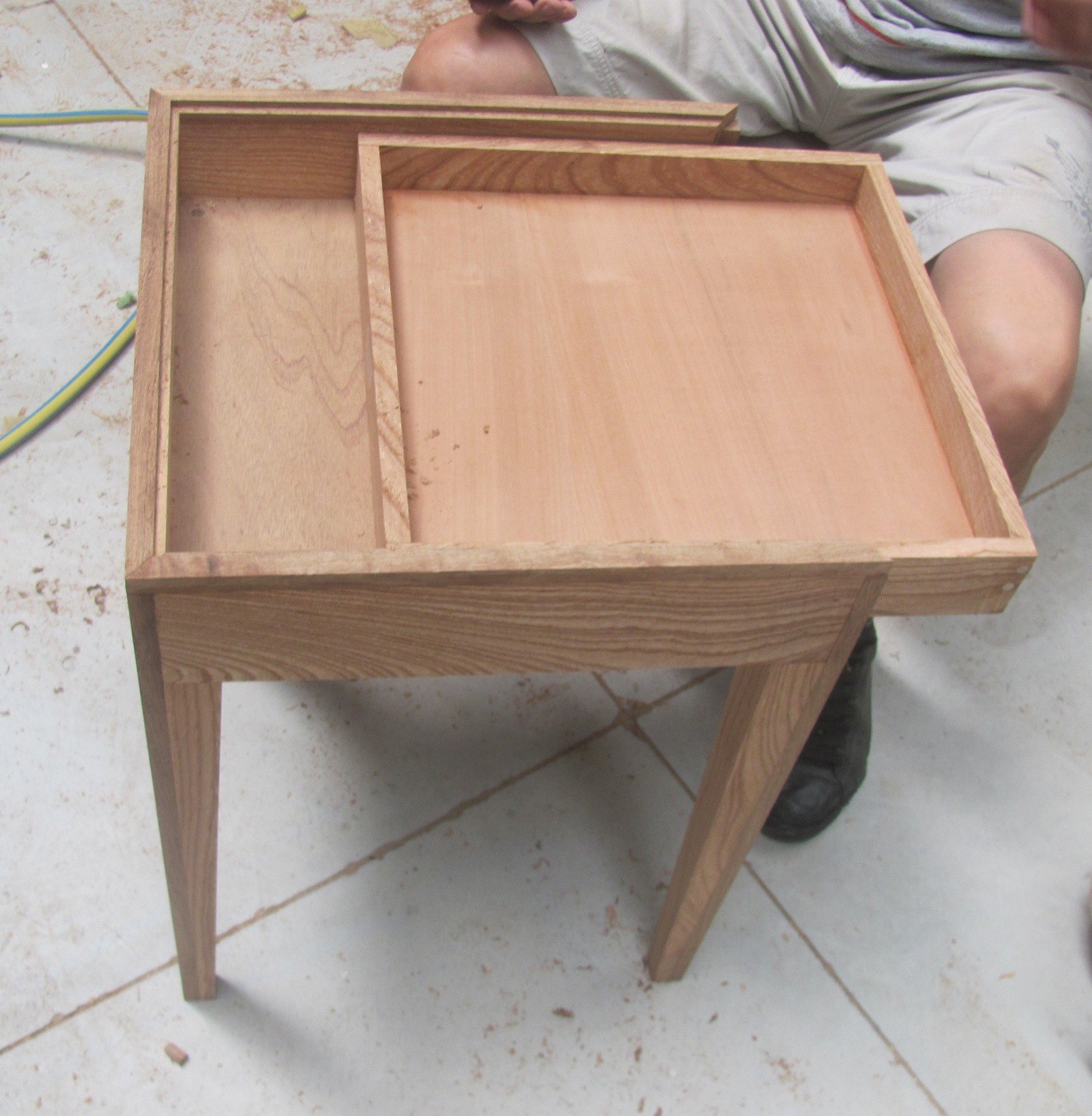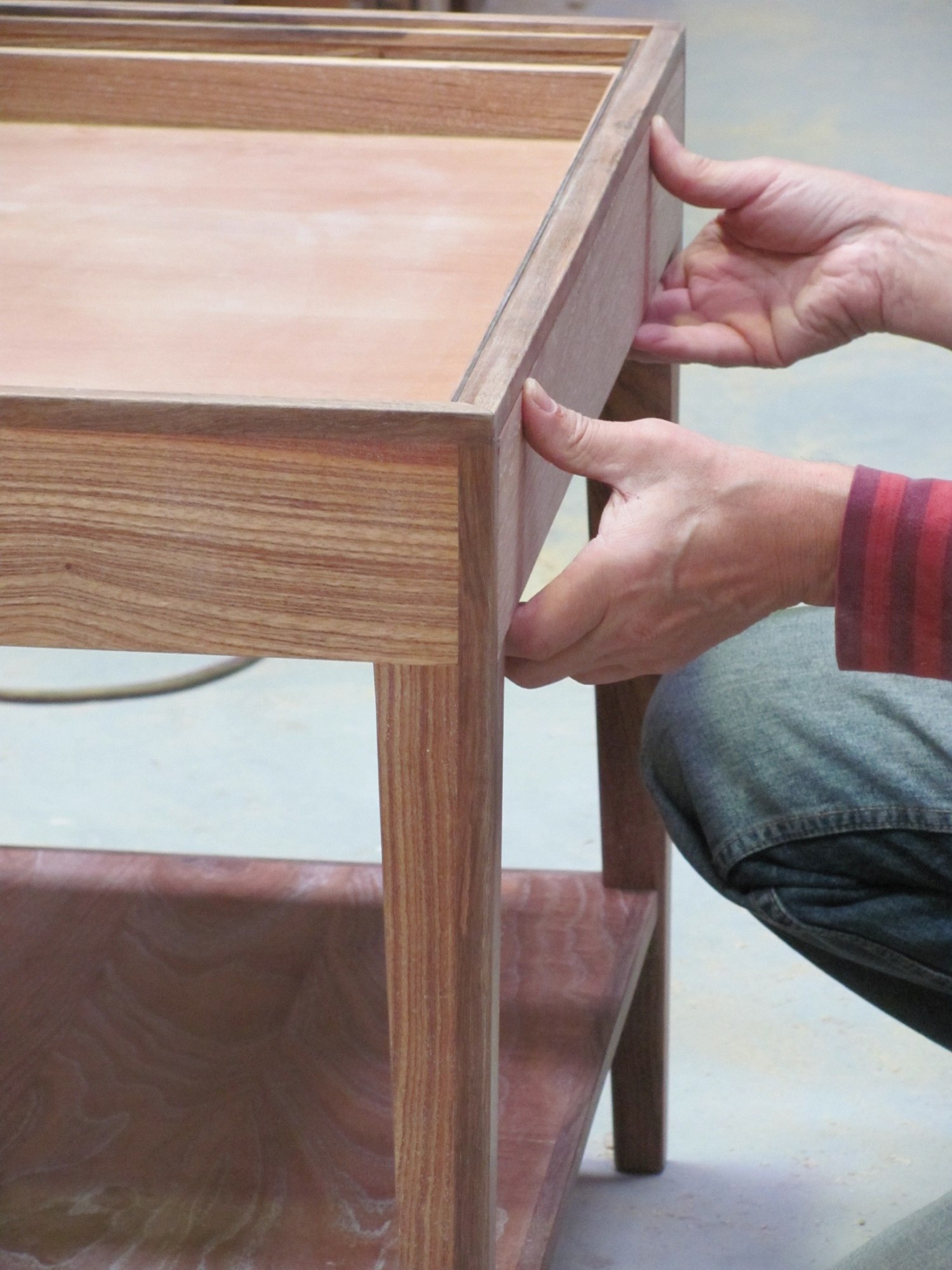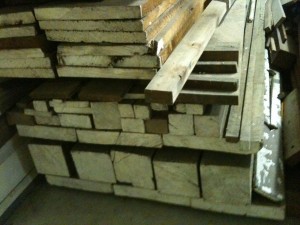One One One Eagle Street tables
The process for making these tables was very different to the Cedar side tables, which were unique, and for which I was commissioned to both design and make. These restaurant tables were designed by Cox Rayner and Deka Design was to make them.
With a total of 27 tables I needed to set up a mini-production run, and some jigs were made to assist with certain processes such as the cutting of the specific edge detail.
The design was a solid timber rim with a recycled leather insert on top of an MDF structure. The base was to be powdercoated.
The timber was chosen by Cox Rayner, a beautiful American black walnut, nice to work with and the relative evenness of the colour and grain makes it easy to select the pieces which make a whole. The most challenging part of the process was the adhering of the recycled leather to the MDF substrate. Great care had to be taken so that it would line up perfectly before the glue dried in place.
Here are a few photos of the process.

